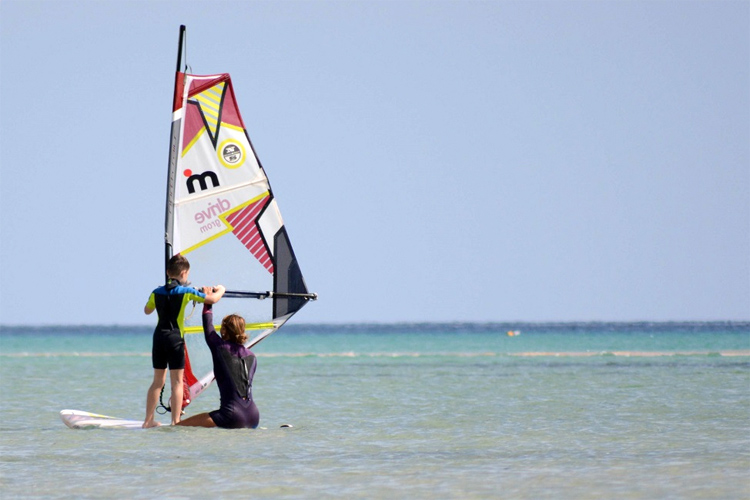Beginner windsurfers must learn how to climb on the board, pull the rig out of the water, and get into and maintain the board in the neutral position.
When learning how to windsurf, you will read and hear multiple designations for the neutral position.
Windsurfing instructors also call it a secure, stable, static, or safe position.
The neutral position is a basic, safe position that should be adopted when standing on the board and after having lifted the sail out of the water.
In other words, it is the last moment before sailing away.
If anything goes wrong, if you fall off the board, or if you wipe out, the secure position is the place to get back to.
So, what is the neutral position? In the neutral position, the board faces directly across the wind, and the windsurfing sail is at a right angle with the board.
Not only is it important to learn how to reach this point, but it is also critical to maintain it.
The secure position is also an essential skill for intermediate and advanced windsurfers because it allows them to position the board where they want it, turn it around, and get ready to sheet in.
Neutral Position 101
Here's how to get your windsurfer into a neutral position.
- Get the board and sail into waist or thigh-deep water;
- Put the daggerboard down;
- Line the board across the wind, with your back to the wind and the rig lying on the downwind side;
- Bring your knees onto the board;
- With the wind behind your, start uphauling;
- Move one hand at a time onto the mast below the boom;
- Keep your arms extended, knees slightly bent, feet on the centerline, and head up;
8. Get a V-shaped between you and the rig;
9. Relax your arm and leg muscles;
10. Get comfortable, and find your balance;
When you're in a secure position, the sail will be flapping out like a flag. The sail is powerless, and the board never moves.
If you need to sail in the opposite direction, you can turn the board 180 degrees while in the neutral position.
All you need to do is move the sail toward the front of the board, and the front of the board will turn away from the wind.
Just incline the mast, and alternately lift the front and back feet and let the board rotate 180 degrees.
Quite often, you will notice that your rig is in the water facing upwind.
In those cases, get onto the windsurf board, and start lifting the rig out of the water slowly until the wind catches under the sail and swings the board around.
